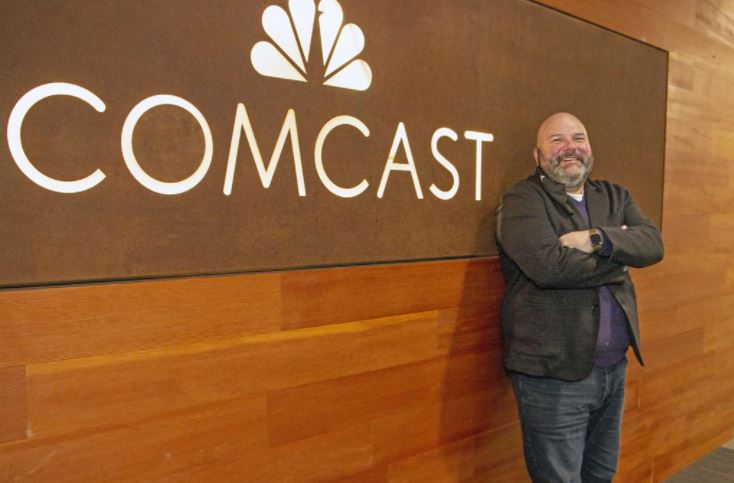PBJ Interview: David Tashjian of Comcast talks connections, be they technological or community, in Portland

Originally featured on Portland Business Journal’s Website
By Andy Giegerich, Managing Editor, Portland Business Journal
After 15 years with Comcast, David Tashjian has a plum job. The new-ish regional VP of the Oregon/SW Washington region oversees 1,200-plus employees who serve nearly 1 million subscribers.
It’s a position that, in 2020, became about much more than providing entertainment through its cable and broadband services.
“We need to make sure our network is working the absolute best it can,” said Tashjian, who took the Portland-area job in September 2019. “We’re continuing to think about and innovate how folks consume media as well as make sure that everything works flawlessly when they are at home.”
We caught up with Tashjian by phone just before Christmas to learn about Comcast’s recent efforts regarding diversity, as well as how the company continues to examine ways to best support at-home education and work-from-home initiatives. This interview has been edited.
It feels ridiculous to ask this after Covid and everything, but I probably should: Can you nutshell your year? It’s been extraordinary and I’ll use that word in all of its many senses. In the first quarter our business was off to a terrific start. Business was very healthy and continued to grow strong. We’re obviously in a competitive marketplace we’re the dominant provider in market share here. So we were feeling great.
I was just going through some emails and I found that we were discussing things like working from home and safety protocols as early as the middle of February. So we didn’t get too far into the year without really recognizing that it was going to be a very different year. And so quickly, the company pivoted.
In the span of about five or six days, we had all of our employees equipped to work from home. And then we were trying to figure out how to keep the folks who can’t work at home safe.
Right, because they often have to go into homes. They would have to take such leaps of faith that they’re not being exposed. We were identified as an essential service, obviously because broadband is essential. We had protocols in place, 10 feet of distancing, the proper masks. We believe we are doing everything to keep our employees very safe.
We have a series of questions that get asked, and then we have the “reasonable person rule:” If there is a technician who feels unsafe, we have a process for addressing that as well. We have had zero cases of transmission from within the work environment.
How did you work with customers? Nationally, we made a pledge that we weren’t going to disconnect customers’ broadband at all. We’ve done24 internet essential partnership programs with school districts, colleges and different workforce training programs to ensure that folks that can’t get our extended services have a broadband quality level of service. And, the company has really leaned in publicly with a commitment of over $100 million towards racial equality.
Touching on those two things for a moment, I didn’t realize you weren’t disconnecting services. We voluntarily pledged to not disconnect anyone who couldn’t afford their broadband services. While we’d had an obviously record-high unemployment rate, things have somewhat stabilized, and while we don’t have an official pledge in place today, it remains very broad reaching. We have many programs that customers can go into. Our intent is not to disconnect anyone who, because of non-payment, needs broadband. We have flexibility with making sure we can keep customers connected.
Tell me a little more about the diversity program funding. I’m 15 years in with I’d like to think we’ve always had a focus on diversity, equity and inclusion. We’ve, like many companies, decided to take a much more public stance. We’ve committed $100 million incremental to what we already invest in our communities. We’ve developed programs like our RISE program which focuses on Black-owned persons of color-owned businesses. We have eight local businesses that have received help from that program in a variety of ways, like grants, advertising campaigns and a technology makeover. And, this isn’t about being a customer, and this has nothing to do with being a customer. We’re providing the services to folks who aren’t customers here locally. We’ve always had this commitment we’re just really doubling down on it.
Another thing that emerged during Covid is the need for reliable internet services. We have all sorts of contingency plans as an organization. We know that from a critical infrastructure, our network would handle it.
Which is important not just for people working from home but the many households with kids who now attend school this way. We have partnered with some schools that have needed some help. And, we have an internet partnership program where we work through school districts to ensure that students are connected, as well as different workforce training programs. I have to make sure their network is working properly. We’ll promise that we’ll do it but it’s a tough thing we’re asking our teachers and our students to do. I have a 12 year old and a nine year old at home. I started here last September. My children have never set foot in their new school.
David Tashjian
Title: Comcast regional senior leader, Oregon and S.W. Washington
Previous job: VP of sales and operations strategy
Hometown: Born in Modesto, Calif., “however, Portland is the 16th city I have lived in.”
Education: Multiple executive education programs at Stanford, Penn and Harvard. Currently attending DePaul University.
Family: Wife Andrea, Maxwell (12) and Olivia (9)
Book he’s reading: “A Promised Land,” by Barack Obama
OnDemand TV shows he’s watching: “City on a Hill”